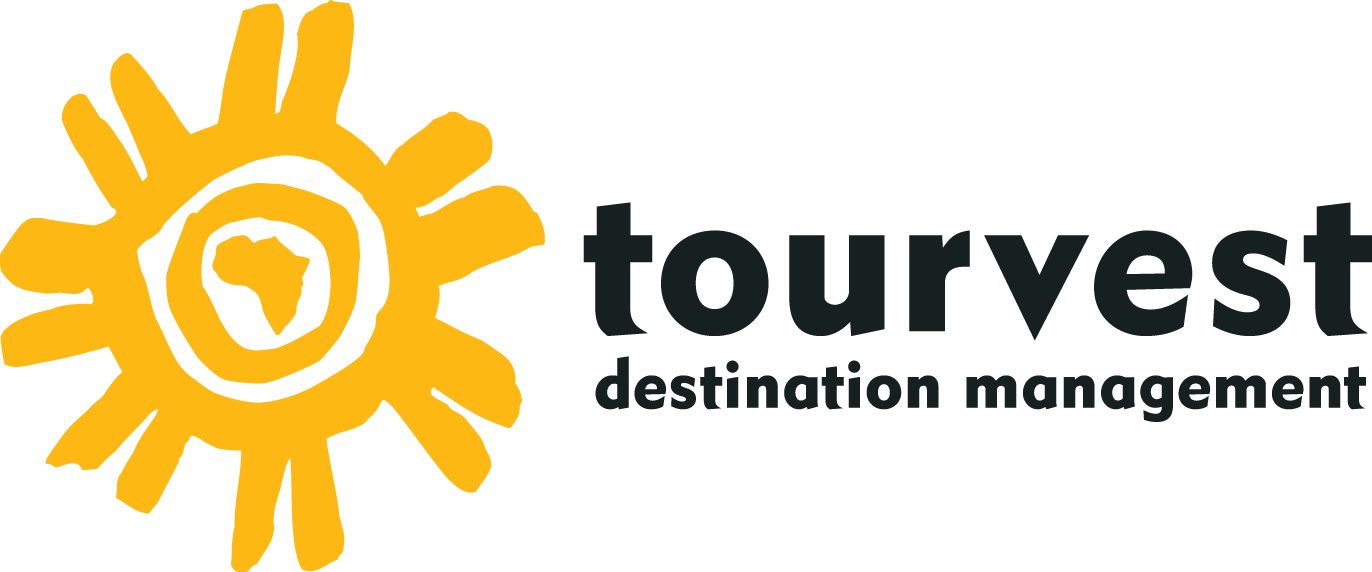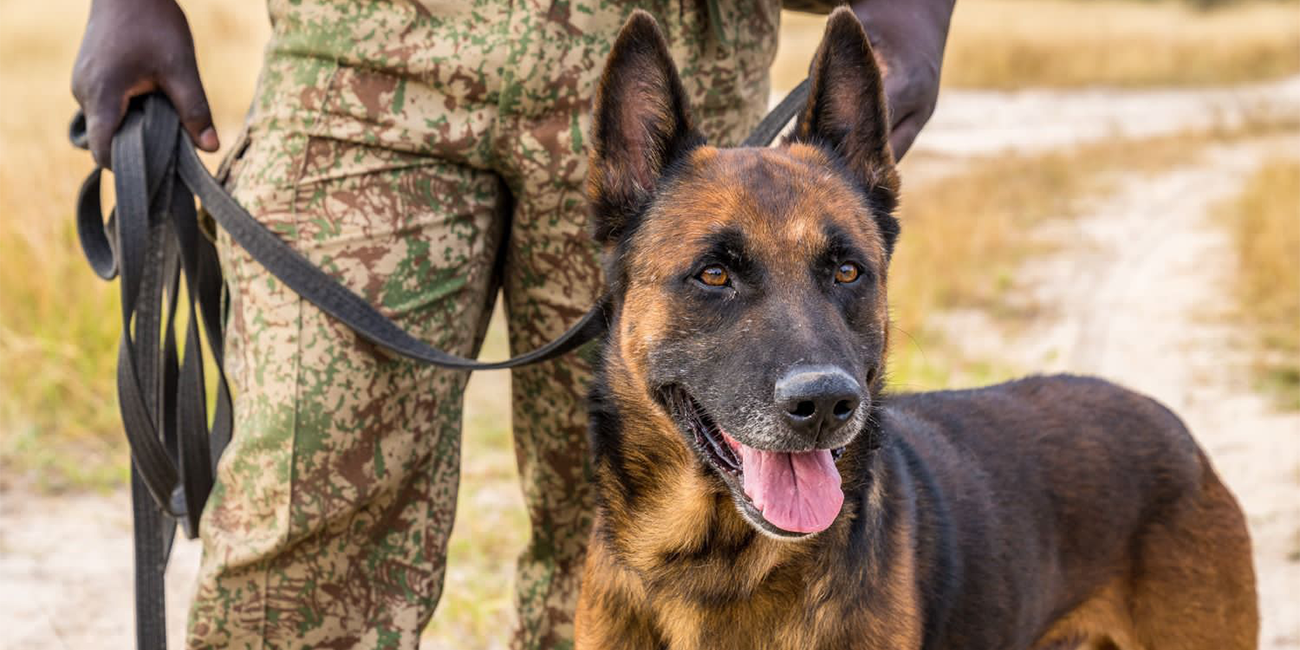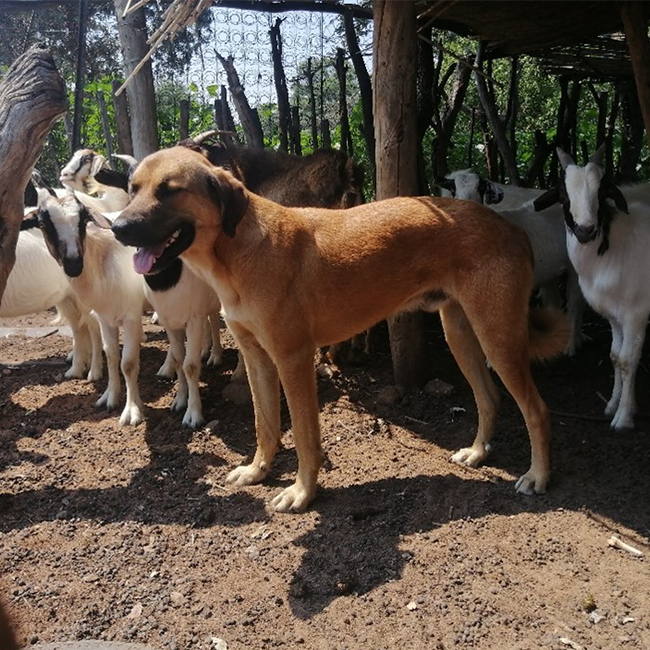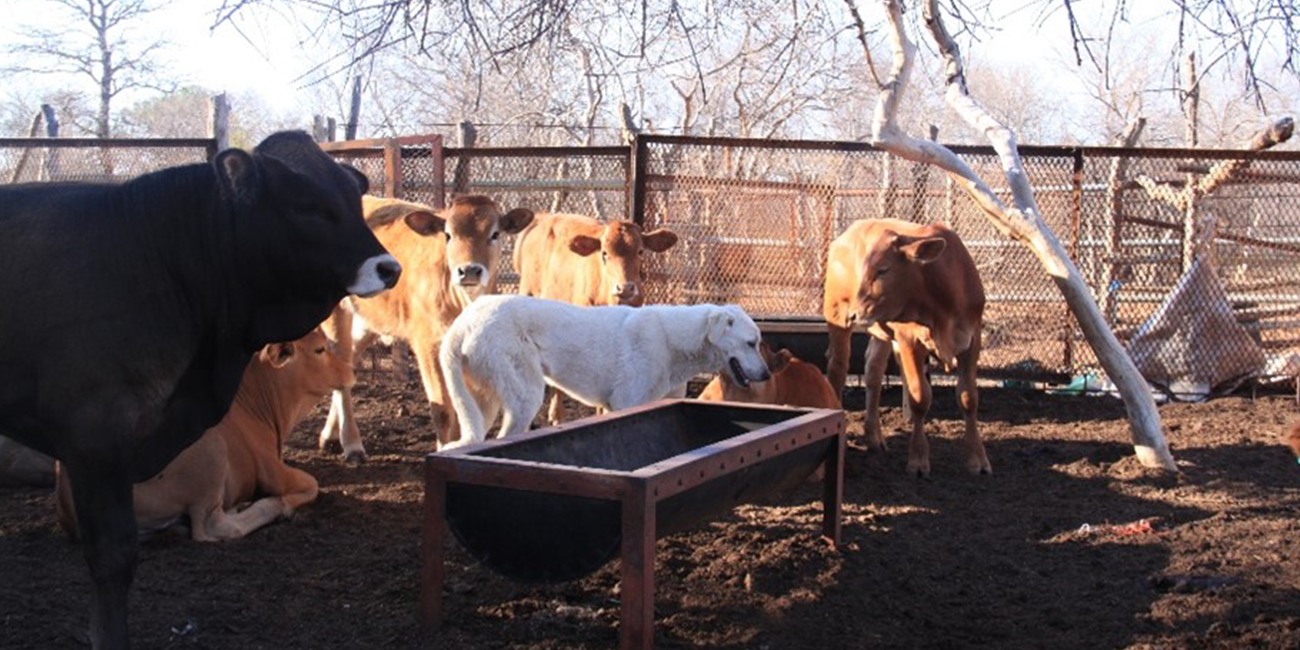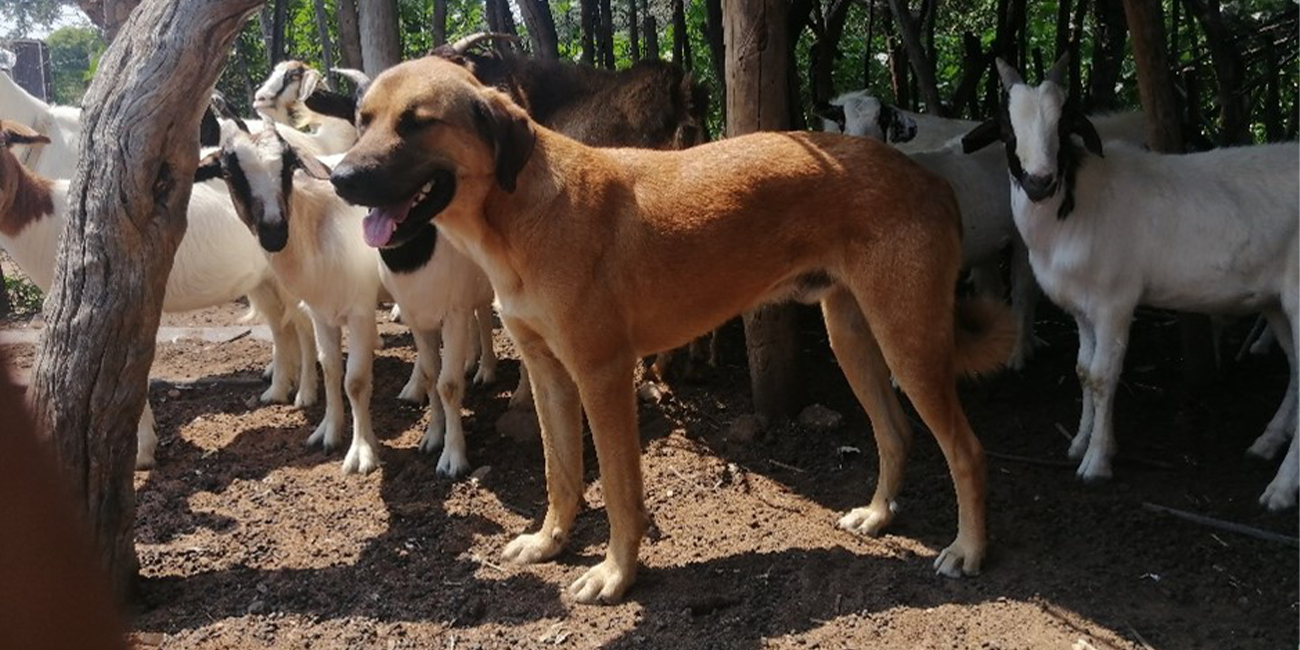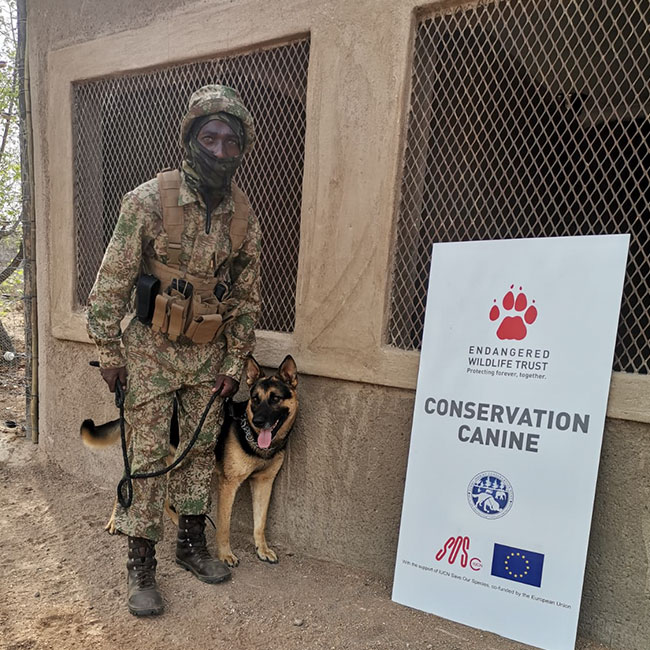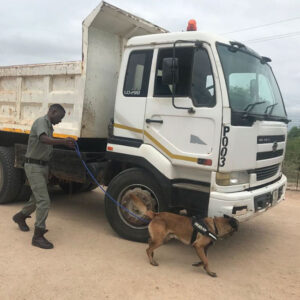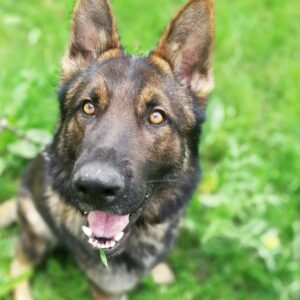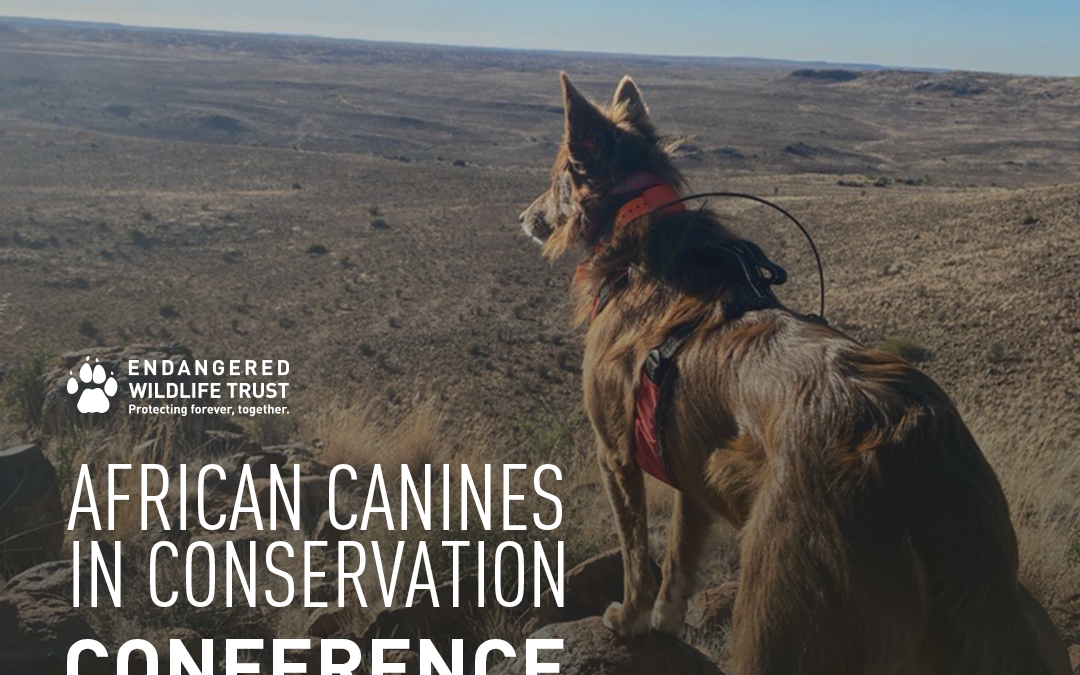
African Canines in Conservation Conference
The Endangered Wildlife trust and partners are excited to reveal that we are planning our first African Canines in Conservation Conference for March 2025. The event will be hosted at the EWT’s conservation campus in Midrand (Gauteng) and will have a predominant focus on the use of dogs for conservation research projects, and all the other aspects associated with it. There will also be one session aimed at other applications for scent detection dogs, that will allow for speakers outside of the conservation field. The preliminary dates for the conference are 18 and 19 March, where the aim of the conference is to bring around 100 people from different backgrounds together to share experiences and knowledge, and to allow for networking and establish collaboration opportunities.
We are pleased to announce our keynote speakers for the event:
Full event programme at bottom of page
Kayla Fratt

Kayla Fratt is the co-founder of K9 Conservationists, a non-profit organization in the United States, and the host of a podcast by the same name. The organization aims to unite highly trained conservation detection dog teams with researchers to collect scientific data and to provide mentorship, education, and foster collaboration among scientists, novice handlers, and local communities. Kayla is currently a PhD student and NSF-GRFP Fellow at Oregon State University in Taal Levi’s lab. Her research there focuses on the combination of scat detection dogs and genetic methods to answer questions regarding diet and movement of sea wolves in southeast Alaska and the recolonization of pumas in El Salvador. In the past, Kayla has also worked in Kenya with cheetah scat detection dog teams and searched for jaguar and other felid scat in Guatemala. She is a Certified Dog Behavior Consultant and is committed to methods maximizes the welfare and efficacy of working dogs.
Esther Matthew

Esther completed her M.Sc. in Environmental Science. As part of her study that started in 2014, she successfully raised and trained a scent detection dog to locate Giant African Bullfrogs (Pyxicephalus adspersus) underground. Subsequently, she joined the EWT team and as the Specialist Conservation Officer has been using dogs to located elusive and Endangered species focusing on in situ conservation. She obtained national and international qualifications, and due to her work and research with detection dogs, Esther became a National Geographic Society Explorer. Focal species that she has worked on include the Critically Endangered Riverine Rabbit and De Winton’s Golden mole, as well as three of South Africa’s most rare tortoise species. Furthermore, she was also part of the EWT team who trained the first three succulent plant detection dogs for anti-poaching purposes, which already resulted in a few successful operations.
Louise Wilson

With over 20 years of international experience, Louise Wilson is a trailblazer for conservation detection dogs in the UK. As Managing Director of Conservation K9 Consultancy, she has trained canines to detect everything from cheetahs and hedgehogs, to water voles and invasive beetles. At the conference, she’ll share her expertise in ethical, efficient, and non-invasive wildlife surveys, drawing from her groundbreaking work across the globe.
Will Powell

Will Powell, CEO of KURU – the Conservation Dog, brings nearly 30 years of expertise in training over 3,500 dogs for humanitarian and conservation missions. Since 2014, his programs in seven African countries have fought wildlife trafficking, reduced poaching, and safeguarded endangered species. At the conference, he’ll discuss the tangible impact of canine units in protecting Africa’s wildlife, and the lessons he has learned along the way.
We are already excited about the experience and knowledge these speakers will bring to the event and will be announcing the other keynote speakers over the next few months.
It is important to note that participants living in Africa will get reduced fees (compared to international participants), and selected speakers of the event will also get discount. We also hope to have a few scholarships available for which participants can apply. We aim to make the event hybrid, where virtual participants can listen into talks, however in-person attendees will benefit through additional live demonstrations and panel discussions. So watch this space for more information and we hope to see many of you at the event in March!
